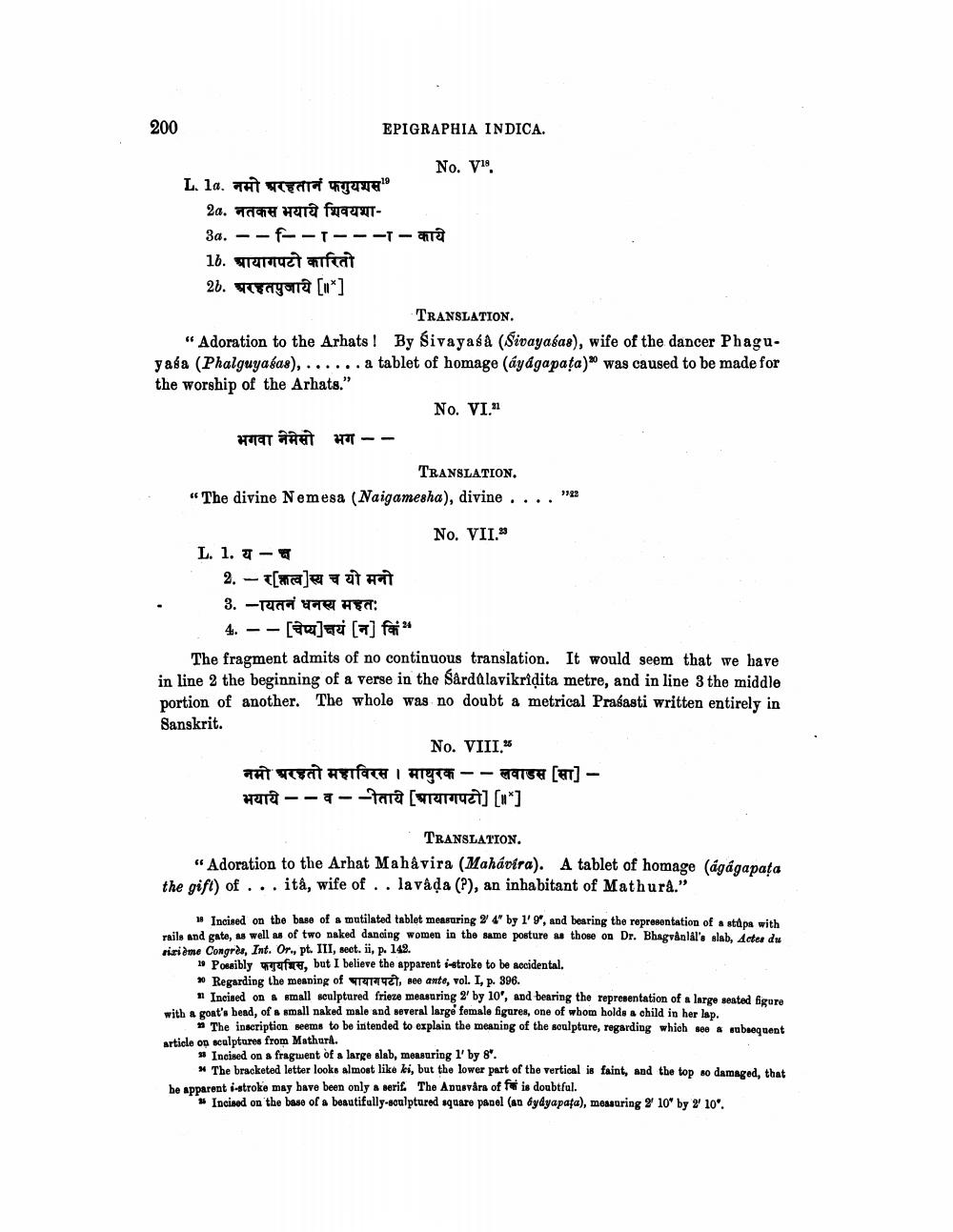________________
200
EPIGRAPHIA INDICA.
No. 71 L. la. H ari ngewe"
2a. Te Hurû faux3a. ---- ---- 16. quruct feat 20. gayonê [ * ]
TRANSLATION. "Adoration to the Arhats! By śivayasa (Sivayabas), wife of the dancer Phaguyasa (Phalguyabas), ...... a tablet of homage (áydgapata) was caused to be made for the worship of the Arhats."
No. VI." Ha aat --
TRANSLATION. “The divine Nemesa (Naigamesha), divine ...."
No. VII. L. 1. T
2. – t[m]e ata 3. -raai we ha:
4. -- [u]ud [at] f**** The fragment admits of no continuous translation. It would seem that we have in line 2 the beginning of a verse in the Sardalavikridita metre, and in line 3 the middle portion of another. The whole was no doubt a metrical Prasasti written entirely in Sanskrit.
No. VIII.” नमो अरहतो महाविरस । माथुरक -- लवाडस [सा] - HUTO --a--Targ [ormuet] [w*]
TRANSLATION. « Adoration to the Arhat Mahavira (Mahavira). A tablet of homage (ágágapata the gift) of ... ità, wife of .. lavada (?), an inhabitant of Mathura.”
Incined on the base of a mutilated tablet measuring 24 by 1'9", and bearing the representation of stapa with rails and gate, as well as of two naked dancing women in the same posture as those on Dr. Bhagvanlal's slab, Actes du risième Congrès, Int. Or., pt. III, sect. ii, p. 142.
» Posibly wrofue, but I believe the apparent i-stroke to be accidental. * Regarding the meaning of ra t , see ante, vol. I, p. 396.
1 Incised on a small sculptured frieze measuring 2' by 10', and bearing the representation of a large seated figure with a gont'bend, of a small naked male and several large female figures, one of whom holds a child in her lap.
The inscription seems to be intended to explain the meaning of the soulpture, regarding which we & subrequent article on sculptures from Mathura.
» Incised on a fragment of a large slab, measuring 1' by 8".
* The bracketed letter looks almost like ki, but the lower part of the vertical is faint, and the top so damaged, that be apparent i-stroke may have been only a serif The Apusvára of fe is doubtful.
* Incised on the base of a beautifully-sculptured square papel (an bydyapata), measuring % 10' by '10'.




